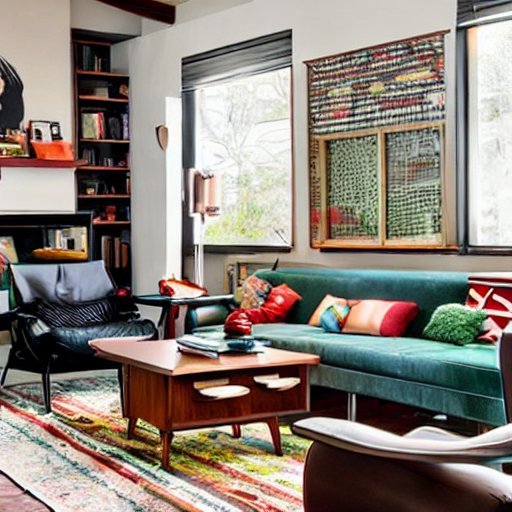Vintage Décor: The Eco-Friendly Choice
Many household items of the past were made to last multiple lifetimes, and why shouldn't one of those lives be spent in your home? By shopping at garage sales, estate sales, and antique fairs, you are choosing to reuse and recycle the distinctive furnishings and accessories of the past, saving them from the dreaded landfill. Mixing a collection of fabulous found items and new sustainable furnishings can make your home a genuine expression of your personality and life that also helps the world around you. Stylish responsibility gives these items a new life and makes them a part of your home.
Choosing vintage and antique furniture can positively affect the environment; it saves landfill space and trees and gives beautiful old wood a longer life. Most fine old-growth hardwood has already been deforested and turned into furniture decades ago, so refurbishing irreplaceable old pieces is a responsible substitute for continuing to destroy any more mature hardwood trees in endangered forests.
Reusing old items also reduces your personal carbon footprint while potentially saving some cash and making your home a bit cooler — not to mention old stuff is better quality stuff. Objects produced in an era when everyone had a tool kit means it was built to last through a few dents and scratches. Making repairs on things around the house was a way of life for previous generations. Owning something you can easily maintain is a step in an eco-friendly direction since it is always the green choice to repair what you have rather than throwing things away just because they broke.
Buying Vintage Furniture
When furnishing a home, opting for vintage or antique furniture can be an excellent choice for those seeking eco-friendly alternatives. While there is no definitive classification for when furniture becomes vintage, some may consider anything "old" to fit this category. In contrast, others may argue that objects must be at least 20 years old. On the other hand, antique furniture refers to pieces that are at least 100 years old and are typically associated with the turn of the 20th century.
Individuals can make an environmentally conscious decision by choosing vintage or antique furniture, as these pieces do not contribute to the energy and water costs of new manufacturing. In addition to being eco-friendly, these pieces often offer a unique aesthetic and character that cannot be replicated with more contemporary furniture.
Whether you are a collector of vintage or antique items or simply looking for an eco-friendly option when furnishing your home, choosing pre-loved pieces can be a sustainable and stylish choice.
Safety Considerations
Ensuring the safety of children should be a top priority when selecting cribs and children's furniture, which should meet current safety standards to avoid any potential hazards.
When it comes to painted furniture made before 1978, it's essential to be aware that it may contain lead, which can pose a risk if the paint is chipping. While applying a sealant may be a viable option, it's worth noting that this could alter the appearance and value of the item. If young children are present in the household, it may be best to exercise caution and wait until they are older before considering such pieces. However, antiques dating back to the 19th century or earlier are typically safe from lead paint.
If you're looking to refinish or restore antique furniture, it's wise to seek experts in the field to ensure that the work is done correctly and without damage to the piece. When repainting furniture from the 20th century, it's best to assume that all paint may contain lead and take the necessary precautions to ensure safety. By being mindful of safety concerns and seeking out expert assistance when needed, you can enjoy the beauty and charm of antique and vintage furniture without putting yourself or your family at risk.
Buying to Repurpose
Whether you call it salvage-chic or dumpster-chic, creatively reusing old items can bring new life into them, resulting in unique treasures that reflect your individual style.
Repurposing is a fun and creative way to decorate and a sustainable choice that can help reduce the amount of material sent to landfills. According to the American Society of Interior Designers, a staggering 90% of everything produced in the United States is in landfills within a year of manufacture. Reusing and repurposing existing items can help reduce our environmental impact and promote a more sustainable way of living. Incorporating vintage furniture into your home decor is a great way to make a distinctive and functional space. Rather than limit yourself to the original purpose of these pieces, think outside the box! Use a small table as a nightstand, repurpose a secretary's desk as a bar, or transform an old trunk into a coffee table. Shopping for vintage furniture allows you to create unexpected, stylish solutions to make your space unique and even more livable.
So, whether you're looking to refresh your decor on a budget or enjoy the thrill of the creative process, repurposing old items is a great way to positively impact the planet and bring uniqueness, one-of-a-kind pieces into your home.
By choosing vintage decor for your home, you can make a style statement and take an eco-friendly step towards a more sustainable future - without compromising your sense of style. Vintage pieces represent a unique combination of the past and the present, making them more than just a piece of furniture but an investment in the future.
Vintage decor gives a fresh start to something loved once that can be loved again. So, let’s honor the memories of the past and move forward to a greener future. Let’s all make the sustainable choice and embrace vintage decor as a creative and conscious way to decorate our homes.





